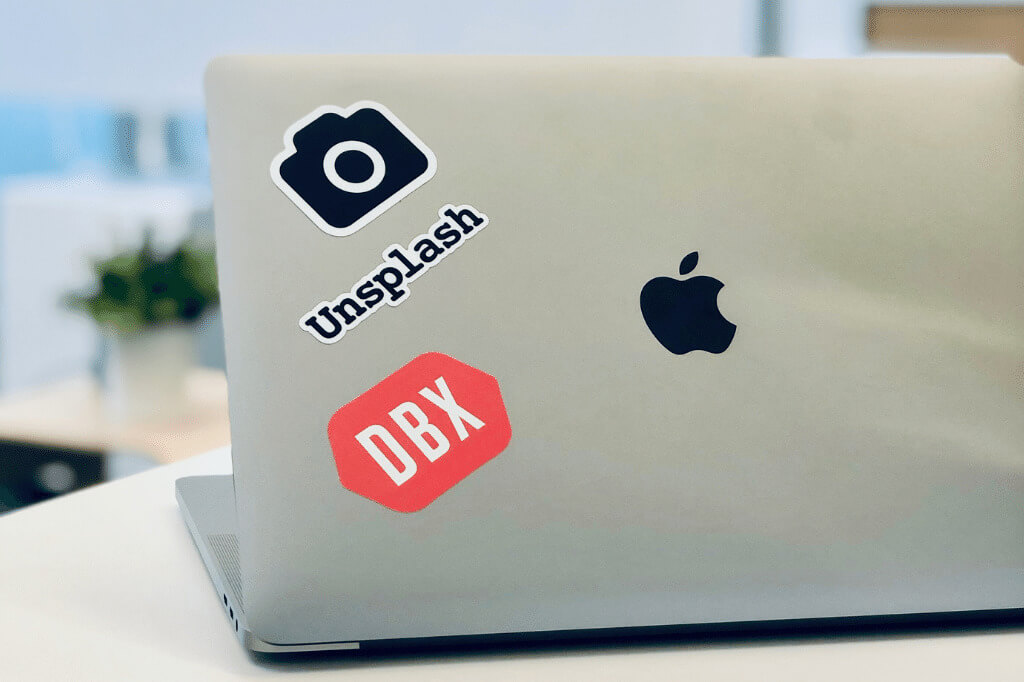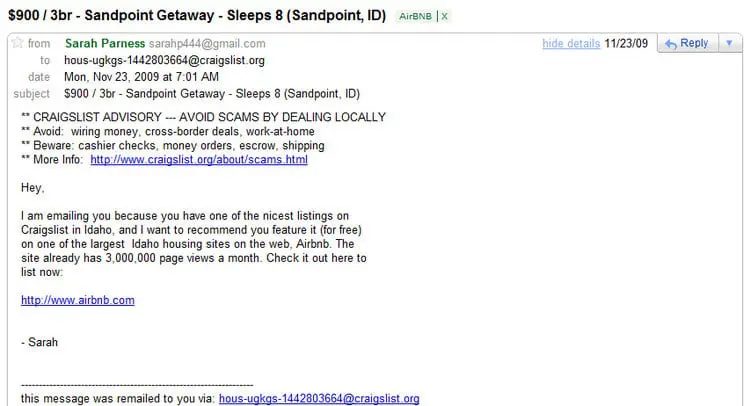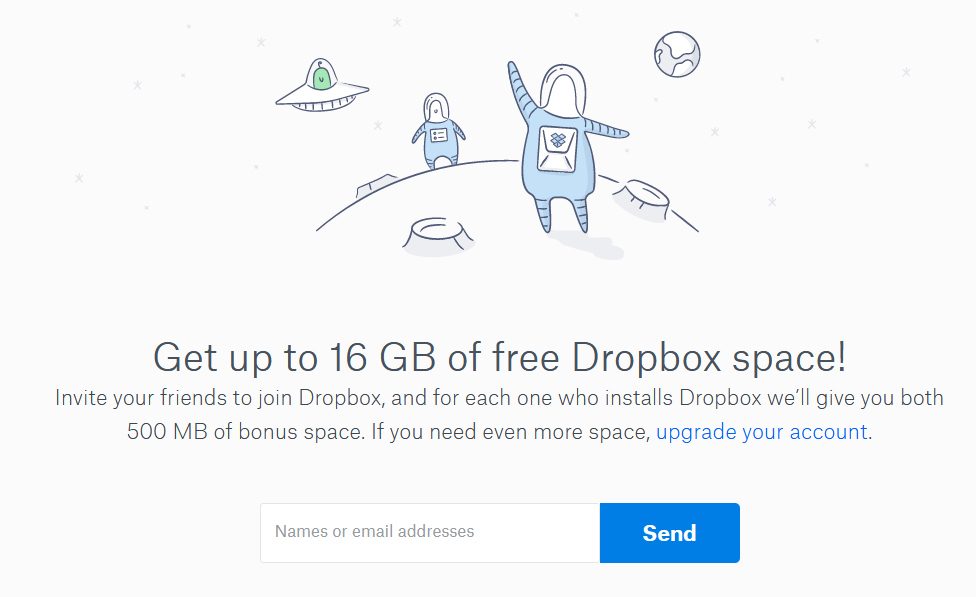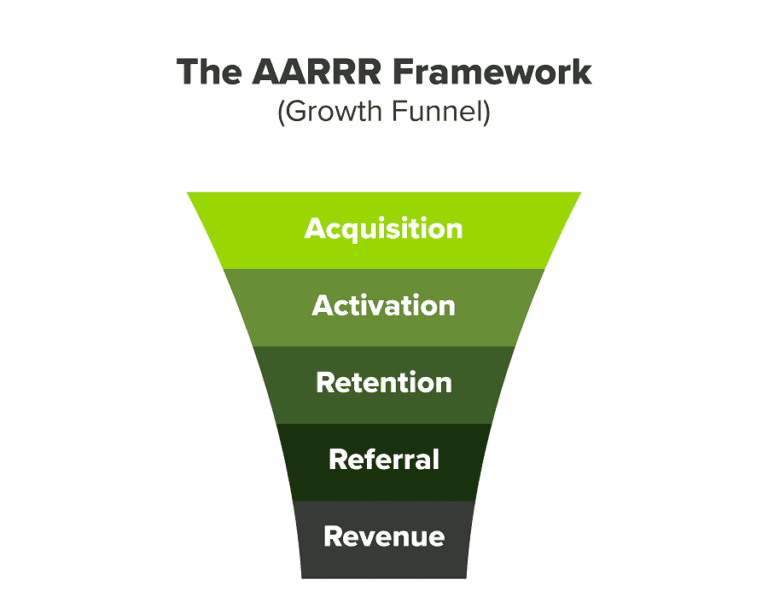Growth hacking is how Slack went from 15,000 to half a million daily users in its first year. It’s why Canva can call itself a multibillion-dollar platform and how ConvertKit pulled itself up to compete with goliaths like MailChimp and Campaign Monitor.
Growth hacking isn’t about deploying sleazy tricks. It’s about making calculated, data-driven moves for fast growth.
In this article, you’ll learn what growth hacking in marketing is and what it’s not. We’ll look at strategies to reach and engage potential users and break down examples of brands that have used growth hacking to achieve success.
Table of contents
What is growth hacking?
Growth hacking is a practice that aims to acquire as many customers as possible while spending as little money as possible. The goal of growth hacking as marketing is rapid growth, using strategies and tactics that leverage (and even exploit) technology, platforms, and behavior to reach an end goal.
GrowthHackers founder and former Head of Growth at Dropbox, Sean Ellis, coined the term:
“A growth hacker is a person whose true north is growth. Everything they do is scrutinized by its potential impact on scalable growth…
An effective growth hacker also needs to be disciplined to follow a growth hacking process of prioritizing ideas (their own and others in the company), testing the ideas, and being analytical enough to know which tested growth drivers to keep and which ones to cut. The faster this process can be repeated, the more likely they’ll find scalable, repeatable ways to grow the business.”
Where campaigns to build brand awareness and generate top-of-funnel sales drive traditional marketing, data across the entire customer lifecycle drives growth hacking in marketing. This includes acquiring customers, activating them quickly, and retaining them over a long period.
By using data to inform every decision, growth marketing delivers proven ROI by using resources you have in an economical manner.
Why do people think growth hacking in marketing is controversial?
Growth marketing was born out of necessity. Startups need to survive and thrive on a shoestring budget, which is why it’s based on rapid experimentation.
Some see growth marketing as the antithesis to an in-depth digital marketing strategy that cultivates a business over time using storytelling and content marketing.
There’s also a view that growth hacking uses unethical black hat or gray hat methods such as spamming, buying links, and default opt-ins. But, as Sean Ellis notes, it isn’t about manipulating customers—it’s about helping them:
“Sustainable growth is about understanding the value people get from your product and helping people realize this value. Some of the best gains come from understanding friction that prevents people from experiencing value. These can include UX issues or concerns that aren’t addressed in copy.” [via Observer]
Growth hacking is about caring for and optimizing the user experience to build trust and keep customers using your product.
The skills and mindsets of world-class growth hackers
In his course on Growth Mindset (part of CXL’s Growth Marketing Minidegree), WeTheFuture.org founder John McBride describes three key components of a successful growth marketer:
1. Channel-level expertise: An understanding of how the channels work (e.g., SEO, email marketing, Facebook advertising)
2. Analytical capability: Possessing Excel or SQL skills to extract data and gather insights on experiments to make better decisions
3. Cross-functional strategic thinking: Being able to come up with new ideas, understand the customer journey, identify opportunities, and work effectively with other stakeholders
John says to drive growth, growth marketers must develop a “T formation.”
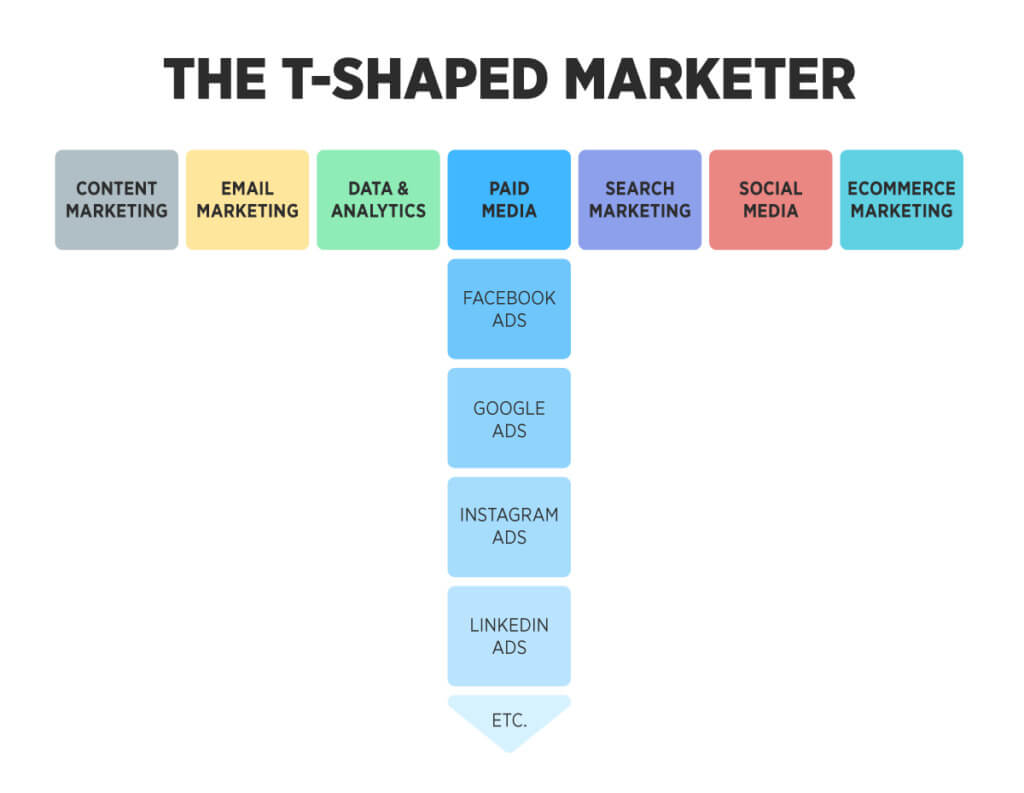
Successful growth marketers should have a baseline in each area but focus specifically on one skill.
Look at where your strengths lie and get really good at that. Build growth teams around your expertise by supplementing your baseline skills with skills in other areas.
Airbnb and Dropbox: Exploring two of the most popular growth hacking case studies
Airbnb and Dropbox are textbook examples of how growth hacking can transform a business from a niche offering into a household name and market leader.
Airbnb learned its audience used Craigslist to list and search for accommodation. Rather than run marketing campaigns to pull customers away from its rival, it experimented.
Whenever someone listed their accommodation on Craigslist, Airbnb emailed them to ask if they wanted to also post listings on its platform:
This simple email increased traffic, allowing Airbnb to convert Craiglist users thanks to its user-friendliness and more attractive listings.
After this initial success, Airbnb then reverse-engineered Craiglist forms with a tool that allowed users to repost their listings:
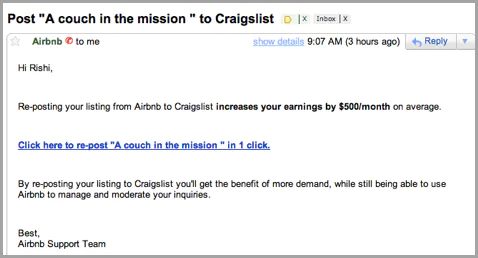
By communicating benefits and removing barriers to success, they gave users a reason to get involved.
This helped the company gain immediate access to a new target market. The result? An increase in listings from 50,000 to 500,000.
Where Airbnb recognized the value in another platform, Dropbox doubled down on the strength of its product as a distribution channel.
The team created a referral program that allowed users to earn more storage for recommending Dropbox to their friends.
Dropbox Basic account holders earned 500 MB of storage for each successful referral. Dropbox Plus and Professional account holders earned 1 GB.
The strategy helped them grow from 100k users to over 4 million users in 15 months.
Both case studies highlight the importance of creative thinking in marketing growth hacking. They also show the need for simplicity and reward.
Airbnb might not have been able to tempt as many users to cross-post to Craigslist if the process was labor-intensive.
Similarly, Dropbox’s referral program might have fallen flat if people had to personally pester their friends. Instead, they could simply click a link and enter an email address.
Neither would have achieved virality had customers not received something tangible for their efforts.
The greater your understanding of the market, channel, and customer, the easier it becomes to turn what people want into a competitive advantage.
How to create a growth hacking strategy using the pirate metrics model
Growth hacking in marketing incorporates the five stages of the customer lifecycle into the “AARRR Framework,” otherwise known as the “Pirate Metrics model.”
500 Startups founder and entrepreneur Dave McClure created this model as a way for growth hackers to optimize the speed of their sales and marketing efforts in generating results.
Let’s look at each stage of the framework and how to use it to drive and measure growth.
Acquisition
This stage answers the question: “How do our customers find us?”
Don’t worry about reaching as many people as possible. Instead, focus on reaching the right people. Use customer personas to get a clear idea of who your customers are:
- What keeps them awake at night?
- What motivates them to solve their problems?
- What are their desires?
Use this information to identify the channels to reach customers and the type of content that they’ll relate to.
Don’t cast your net too far and wide. Focus on the channels that offer the best ROI. As InVision App’s marketing manager Sophia Eng explains:
“It is rare for a large company at a late stage or an enterprise software company to be doing growth marketing with all of the channels at top peak performance. Essentially, you just have to understand where your customers are and what they’re doing…
You shouldn’t spread yourself too thin because you won’t be successful in any. It’s important to be able to identify the one to three channels that [are] working for you.” [via CXL’s Growth Marketing Minidegree]
For each potential channel, look at:
- Customer acquisition cost
- How many customers you can reach
- Whether the channel reaches the right audience
Evaluate each channels’ ability to scale. This is important if you hit on something that works.
For example, if you run a software company, talking to clients at a trade show might put you in touch with the right audience. But it’s not a channel you can scale as easily as LinkedIn, which offers a similar audience.
In the acquisition phase, measure these performance metrics:
- Customer acquisition cost
- Conversion rate
- Website traffic
- Click-through rate
- Bounce rate
- Quality of leads
Activation
Where the acquisition stage solves problems with content, the activation stage solves them with a sample of what you can do.
Move your customers from acquisition to activation by giving them a reason to choose you and making the process easy.
Deliver an exceptional customer experience both in your offer and onboarding. Take the documentation productivity platform, Swimm. It targets users on Facebook with ads offering users a free trial:

Users that click-through arrive at a landing page. Their homepage explains what Swimm does and how it works in simple terms. It appeals to people who are tempted by the ad but want to learn more before signing up:
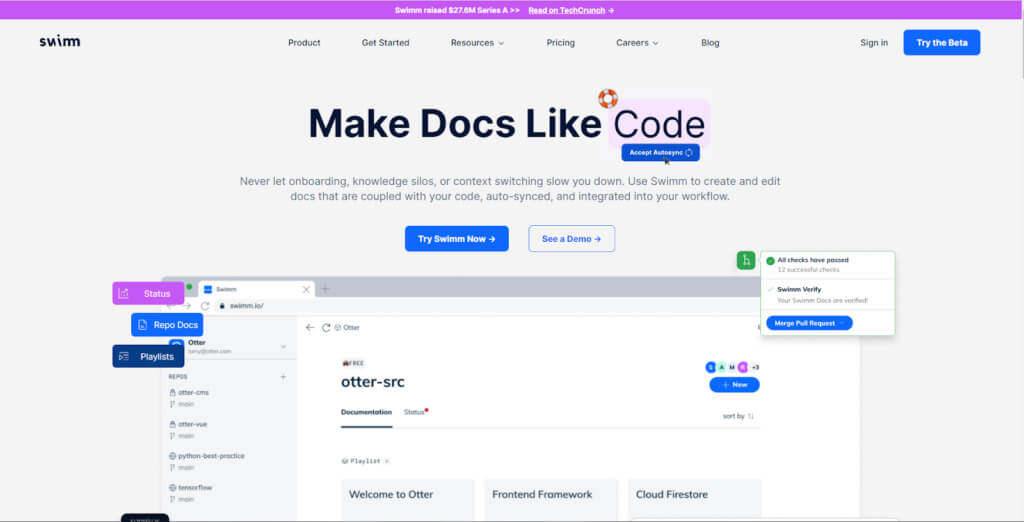
For anyone ready to commit, clear CTA buttons make it easy. This clarity continues with a distraction-free sign-up page:
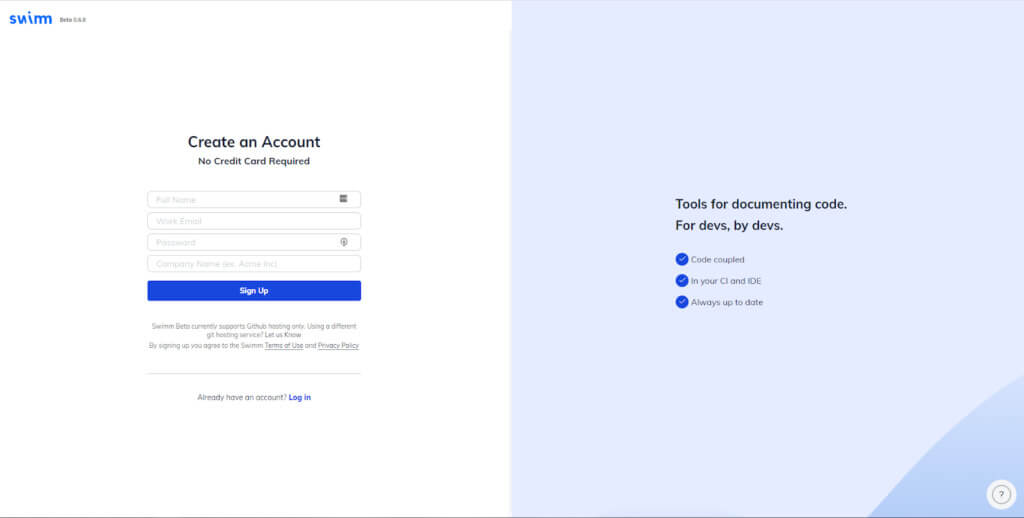
Swimm nails the two key parts of an onboarding process for growth:
1. Guide users to the offer as quickly as possible
2. Reduce complexity in the sign-up process
Activate customers quickly by helping them get the most value from your product or service. Create an offer that solves their problems or helps them achieve their goals.
Common assets for SaaS companies include:
- Free trials
- Product demos
- Freemium offers with limited features
- Webinars
- How to guides
- Whitepapers
In the activation phase, measure these performance metrics:
- Conversion rate
- Number of customers using a product feature
- Drop-off rate
- Dwell time
Retention
Convincing users to stick around is crucial for growth. Two-thirds of an organization’s business comes from existing customers, so pay attention to them.
You can calculate retention using the following formula:
Customers at the end of the period – new customers gained within the period / the number of customers at the beginning of the period x 100 = customer retention rate
Address churn by engaging users. Use qualitative customer surveys and gather Net Promoter Score feedback to understand user intent and friction.
What do they want from you that they’re not currently getting? What do they want more of? If they’re happy with your product, would they recommend you?
Use this information to optimize for retention with:
- Transactional messaging. Use language that encourages further engagement in the post-transaction phase. For example: “Save your information for next time,” “Let us know what you think,” and “Additional features you might like.”
- A simple onboarding process. As with activation, make it easy for users to accomplish their goals with minimal sign-up steps and simple tutorials.
- Gamification. Introduce retention hooks that give users a reason to send notifications to other users. LinkedIn, for example, uses endorsements to encourage retention loops. A person receives an email about an endorsement, they visit the platform to view it, and then they’re nudged to endorse people in their own networks.
- Revival messaging. Use email marketing automation to send offers, sale reminders, and new feature announcements to give lapsed users a reason to re-engage.
- Chatbots and live chat. Make it easy for customers to find answers to common questions, so they can overcome pain points quickly. These communication channels also provide valuable insights into customer behavior to improve retention strategies.
In the retention phase, measure these performance metrics:
- Retention rate vs. churn rate
- Customer churn
- Net Promoter Score
- Email open rates
- Email click-through rate
Referrals
Successful retention happens when users are satisfied with your product and leads to them recommending it to people they know.
Recommendations from family and friends are the most trusted source of information, and B2B companies that use them experience higher than average conversion rates.
But of the 83% of people that say they’re willing to refer new business to a company they love, only 29% of them do. It’s your job to make it worthwhile.
Use Net Promoter Score to establish how likely your customers are to recommend you. Follow this up with qualitative questions to find out the “why” behind the feedback (e.g., “Why did you give that score?”, “What would make you more likely to recommend us?”).
Use surveys to find out what customers value most about your product or service. Establish which incentives users need to refer friends.
For users on Trello’s free plan, the extra features of Trello Gold are highly desirable. But few would be willing to pay for them if their needs were already fulfilled.
Offering access to Trello Gold in exchange for every referral lets users upgrade without paying:
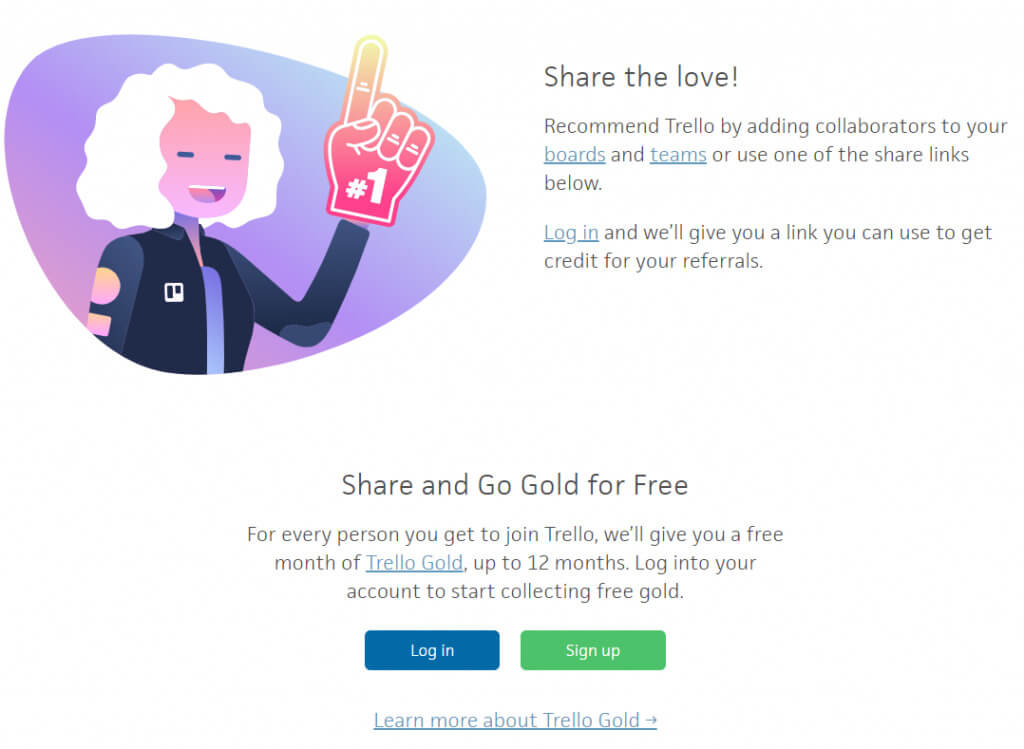
To encourage participation, Trello speaks the language of its users (“adding collaborators to your boards and teams,” “start collecting free gold”). It makes it easy for users to claim their incentive (via a link), and it makes the program cumulative. Users can refer 12 friends and get Trello Gold free for a year.
Every referral adds another new user to the platform. It also lets existing users sample the premium plan, assisting Trello in converting them to paying customers.
Make your referral program beneficial to users by adding to their experience. Test different incentives. Motivate them to continually share with the right reward and make their task effortless.
Keep messaging clear and concise, so it’s easy to understand and reduce the number of steps for referring someone to one or two clicks.
In the referral phase, measure these performance metrics:
- Percentage of customer referrals
- Number of referred users
- Total purchases by referred users
- Lifetime value of referred users
- Positive reviews
- Social media shares
- Net Promoter Score
Revenue
Depending on your product, this stage of the AARRR Framework may fit in before referral.
Start by analyzing the factors that could slow down conversion:
- Is your USP clear enough?
- Are the benefits of your paid product easy to understand?
- Is your website optimized for conversions?
- Is there a price stumbling block?
Communicate your offer so that people know exactly how being a paid user will benefit them.
HubSpot does this with tiered pricing to suit different user volumes:
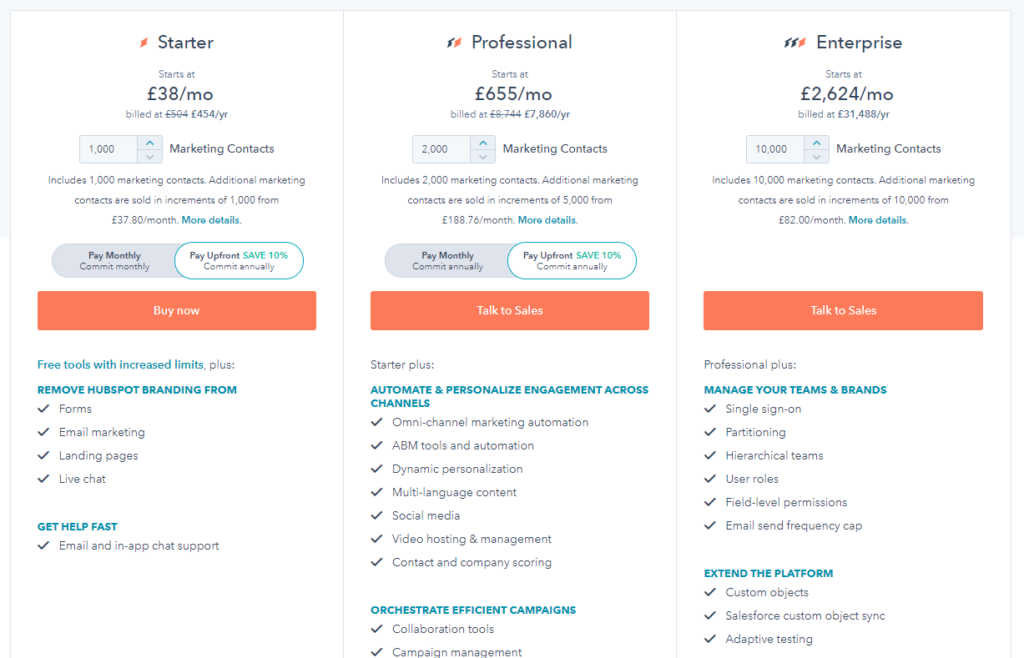
Each tier lists features and benefits so that potential customers can compare packages and see which suits their needs.
Users can then calculate pricing based on their chosen features. This helps them learn exactly how much they’ll be paying for the plan that matches their needs:
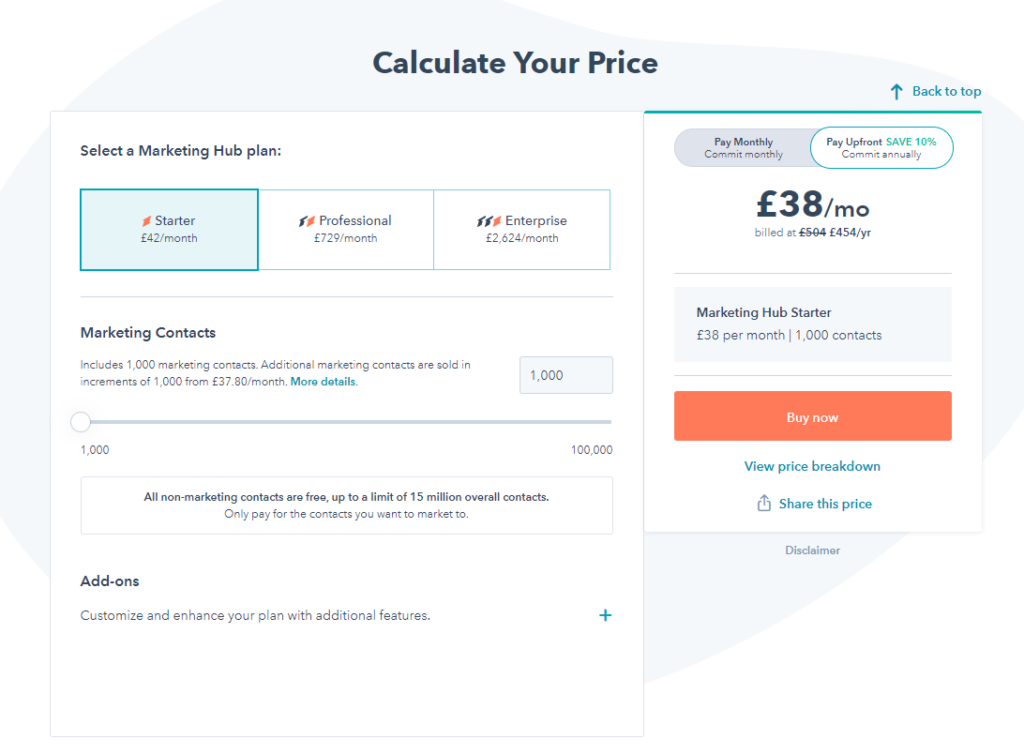
HubSpot also includes an FAQ section and contact details for people to get in touch. And for those who are ready to commit, CTA buttons are strategically placed down the page.
It’s all geared toward addressing concerns and helping users convert.
Where price is a barrier, use price incentives to get people over the line. Buffer, for example, offers Essentials subscribers two months free when they pay annually:

Leadpages regularly runs discount offers in addition to its free trial to convince people to get users on board:
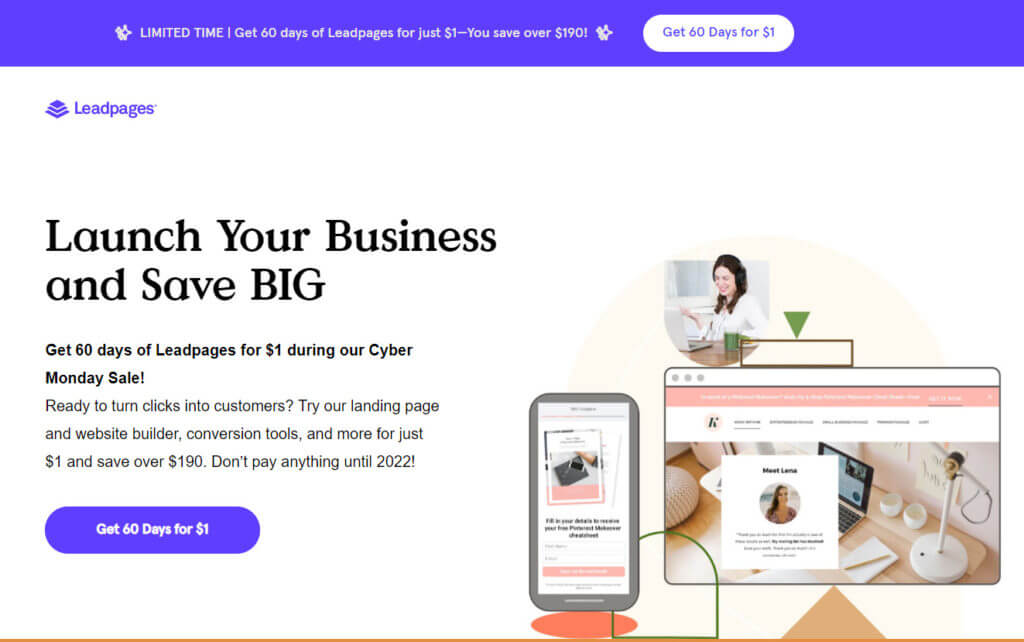
Pricing incentives can attract users who will only use the product when offered lower prices. But they offer a foot in the door that your product, combined with well-planned retention and referral strategies, and regular A/B testing, can encourage users to stick around.
At this stage, it’s important to remember that not all users are created equal. Some customers will be more valuable than others. Establish which users offer the most value by using the PVP index.
This rates each market segment on a scale of 1 to 10:
- Personal fulfillment. How much do you enjoy working with this type of customer?
- Value. How much does this market value your work?
- Profitability. How profitable is the work you do for this market?
Once you’ve established your ideal customer, you can better focus your growth hacker marketing efforts to improve revenue and ROI.
In the revenue phase, measure these performance metrics:
- Customer acquisition cost
- Customer lifetime value
- Monthly recurring revenue (MRR)
- Repeat purchases
- Revenue churn
3 growth hacking examples from brands that achieved early success
Here are three examples of brands that leveraged technology and behavior to achieve rapid growth.
Slack
When Slack opened its private beta in 2013, it did so with 8,000 people ready to try it. On its official launch in 2014, it had 15,000 daily users. One year later, it had 500,000 daily users.
Today that number stands at 10+ million.
How did they achieve this? By harnessing the power of word-of-mouth marketing.
Slack started with a minimum viable product. Then, a handful of companies owned by friends of founder Stewart Butterfield helped this primitive version of Slack reach the next phase.
As the new product was being molded, Butterfield (co-founder of Flickr) leveraged his network and status to generate press coverage and welcome people to request an invitation to try Slack. Users shared these posts across social media, convincing 8,000 people to sign up.
There’s a lesson here: pull every string you have to get people to pay attention. In Butterfield’s case, it was prior experience in SaaS. For you, it could be a big-name customer or investor.
By getting people to try the product, Slack could earn fans that became advocates, creating a snowball effect. Its simple onboarding and fuss-free user interface also help this along. Slack is straightforward to use and makes it easy to connect with colleagues.
It also runs on a freemium model. By delivering a valuable free service, Slack lets users see the platform’s potential for themselves without asking for payment. Subscription, then, becomes a natural progression, as GrowthHackers points out:
“It’s not hard to see the benefit: as more and more work takes place via Slack, the ability to call up details and conversations via search becomes well worth the 22 cents per day.”
If you make it easy for people to see the benefits of your product and offer genuine value without expecting anything in return, people will be happy to shout about you.

The more they do, the more eyes you get on your brand.
Canva
Like Slack, Canva launched with two things in its favor: it was different from anything around at the time (a design platform for non-designers), and it had a freemium business model.
Its rapid rise to 15 million users and 300,000 paying customers in seven years also shares many similarities with Slack.
Before launch, Canva worked on refining the product and onboarding experience so that users would get value.
Founder Melanie Perkins wrote about this in a blog post:
“In order for Canva to take off, we had to get every person who came into our product to have a great experience in a couple of minutes.
We needed to change their own self-belief about their design abilities. We needed to give them design needs, and we needed to make them feel happy and confident clicking around. We needed to get them to explore and play in Canva. No short order! So we spent months perfecting the onboarding experience paying particular attention to users’ emotional journey.”
Canva relied on the usability of its product and customer experience to help grow. Early adopters became Canva’s marketing team, sharing designs and experiences with colleagues:
“Social currency in the sense of our community has always been incredibly valuable for us. Much of that growth has come through word of mouth and our users sharing about us.” – Melanie Perkins [via Forbes]
One of these colleagues happened to be author and Silicon Valley venture capitalist Guy Kawasaki.
When Canva noticed that Guy created his social media graphics with its tools, they reached out. Guy became Chief Evangelist of Canva. His influence helped spread the word to a larger audience, growing the platform from 1.8 million users to 10 million users in 12 months.
Canva’s growth is what happens when you understand your target audience and empower them. Serve the needs of potential users and you’ll have a better chance of gaining their support.
ConvertKit
When ConvertKit launched its email marketing tool for online creators in 2013, it found itself in a competitive market dominated by MailChimp, GetResponse, and Campaign Monitor. Despite this, it’s managed to grow into a company that drives $1 million in Monthly Recurring Revenue (MRR).
ConvertKit’s early success came from cold emailing. Founder Nathan Barry reached out to bloggers and set up Skype demos:
“They loved the idea for the product, but the biggest objection was that it was too much work to switch email providers. So on a whim, I said I’d do it for them. For free.
That worked. We later called it concierge migrations and started doing that for hundreds of customers. Six months after the decision to double down, ConvertKit had grown from $1,300 per month to $5,000 per month.”
Once the company hit $20,000 MRR through direct sales and word-of-mouth, it added an affiliate program, paying 30% recurring commission to influencer bloggers. This introduced thousands of new people to the product while giving bloggers a recurring income stream.
The team then began producing webinars with affiliate partners to help them drive more sales. Webinars are cheap to run. And the team would save on resources by giving the same webinar repeatedly, hosted by different partners. This helped grow revenue by 637%.
“This not only grew our email list significantly (up to 50,000 subscribers in a year) but also drove a ton of new revenue. Today we pay out just over 10% of our revenue each month to our affiliates.”
ConvertKit’s growth is a lesson in repetition. Find one thing that works and repeat it.
Direct sales and webinars worked for Nathan and his team. For you, it might be something else.
Hone your audience to narrow your focus. Experiment with strategies and growth hacking techniques until one generates momentum. When it does, run with it.
Conclusion
True business growth comes from connecting with your customers. The quicker you’re able to establish a bond with your audience, the easier it will be to acquire users and turn them into advocates. It will also mean you’re able to use resources more efficiently.
Reach target users where they congregate. Engage them with valuable content and remove barriers to success. Streamline landing pages and forms to make it easy for people to achieve their goals and incentivize them to encourage advocacy.
Most of all, experiment. Let data guide your decisions, but don’t be afraid to fail fast in search of the most cost-effective strategy.
Build a successful growth hacking career by taking CXL’s Growth Marketing Minidegree.
